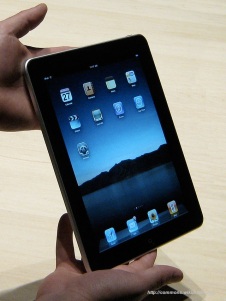 The number of educational topics a pediatrician is trained to cover in a standard well child visit is a bit overwhelming. Each topic could (and does) fill books. A 2006 study published in Pediatrics found that there are 162 different verbal health advice directives that pediatricians are told to cover with each patient over time. These important topics range from injury prevention to nutrition to sexual health to literacy promotion. But, as the authors of the study point out, not only is there little time to cover these topics, there is scant evidence to suggest whether or not talking about these topics with families is actually effective. It is often difficult to know exactly what to prioritize for discussion in a short clinic visit. In order to ameliorate our own anxiety that we didn’t have time for everything, many pediatricians provide educational handouts. But, does anyone read them? What’s more, are they written in the language the parent speaks, at a level they can understand?
The number of educational topics a pediatrician is trained to cover in a standard well child visit is a bit overwhelming. Each topic could (and does) fill books. A 2006 study published in Pediatrics found that there are 162 different verbal health advice directives that pediatricians are told to cover with each patient over time. These important topics range from injury prevention to nutrition to sexual health to literacy promotion. But, as the authors of the study point out, not only is there little time to cover these topics, there is scant evidence to suggest whether or not talking about these topics with families is actually effective. It is often difficult to know exactly what to prioritize for discussion in a short clinic visit. In order to ameliorate our own anxiety that we didn’t have time for everything, many pediatricians provide educational handouts. But, does anyone read them? What’s more, are they written in the language the parent speaks, at a level they can understand?
So, we have more topics to cover than ever before, less time to do it in, and doubt about whether or not it helps. For many parents, the internet is becoming a new way to fill this gap. As more and more of our information moves on-line, many parents are able to seek answers to their questions via the web. Hopefully they are reading credible sources (perhaps a topic for a future post). But, many of the parents of my patients have little access to the internet. And, for the ones that do, many have to rely on children or other relatives to read the information to them.
Which brings me to the title of this post. A recent New York Times article mentions the “app gap” that is developing “in which affluent children are likely to use mobile educational games while those in low-income families are the most likely to have televisions in their bedrooms”. I would argue that there is an “app gap” developing between their parents that is perhaps as important. This gap is a new disparity in access to health information.
What is the solution? I don’t think we yet have all the answers. But, it’s time to get creative. Some people already have. Studies show that embedding parenting advice in baby books and group education about child nutrition in the newborn nursery can be effective.
The group education model is particularly intriguing, giving parents an opportunity to learn not only from the facilitator of a class, but from each other. In the county where I practice, we have an excellent class on childhood feeding practices, following the teachings of Ellyn Satter, offered by the public health department. It is very well received and helpful for families. But, there are still significant barriers to this type of education, such as lack of funding and lack of transportation for families.
As more and more topics are added to a pediatrician’s list of things to cover, I really think we need to start asking families more about what they would like. So, here I am, asking you. Do you find addressing health and parenting topics with your child’s doctor to be helpful? Do they give you handouts? Do you read them? What other sources do you use to find answers to your questions? What else might be useful?

Pingback: A flood of (mis)information: parenting in the internet age | My Two Hats
Pingback: Caring for Patients: Dreaming Of A Better Way | My Two Hats